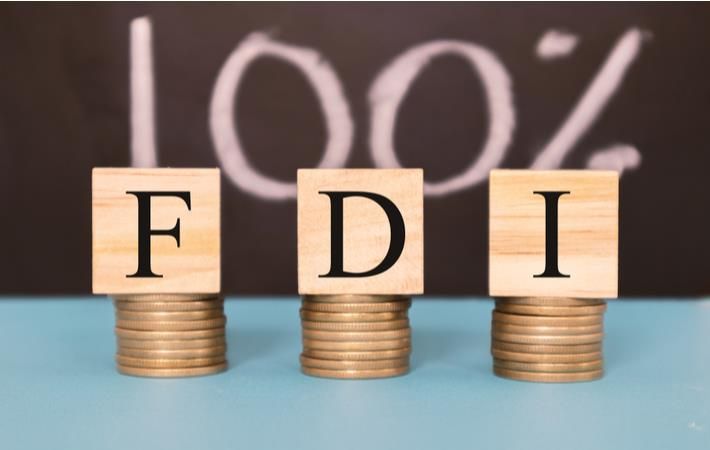Interviews
Global FDI inflows drop by 49% in 2020 first half: UNESCAP
04 Jan '21
3 min read

Pic: Shutterstock
Though both foreign direct investment (FDI) inflows and outflows started to recover globally in 2019, with the former growing by 30 per cent to $1.5 billion and the latter increasing by 33 per cent to $1.3 billion, the COVID-19 pandemic has caused global FDI flows to drop by 49 per cent in the first two quarters of 2020 compared to the same period in 2019.
FDI is expected to remain low and below pre-crisis levels throughout 2021. The outlook beyond 2021 is highly uncertain and dependent on the duration of the crisis, the effectiveness of policy interventions to stimulate investment and navigate the economic effects of the pandemic, as well as geo-economic tensions.
Asia-Pacific’s share in global FDI inflows dropped from 45 per cent in 2018 to 35 per cent in 2019, and its share in global FDI outflows decelerated from 52 per cent to 41 per cent. Nonetheless, the region remained the largest source of global outflows for the second year running, according to a report titled ‘Foreign Direct Investment Trends and Outlook in Asia and the Pacific 2020/2021’ published by the United Nations Economic and Social Commission for Asia and the Pacific (UNESCAP).
In 2019, China and Hong Kong were the largest FDI recipients attracting 38 per cent of total FDI inflows to the region. Japan was the largest source of investment from the region in 2019, responsible for 42 per cent of regional outward FDI.
The pandemic has accelerated the downward trend already recorded in recent years in greenfield FDI with the value of announced inbound greenfield investment projects from January to August 2020 dropping by 40 per cent from the average over the same period in 2019. Likewise, outbound greenfield investment project values declined 48 per cent over the same period in 2019.
Intra-regional greenfield investments as a whole have slowed in 2020 due to the pandemic, with announced intraregional greenfield investment values dropping 45 per cent to $35 billion in the January-August 2020 period compared to the same period in 2019, the report said.
FDI recovery rates are challenging to predict at this stage because they are dependent on the rate of overall socio-economic recovery, and consequently investment levels, within the region and socio-economic rate of recovery from countries outside of the region, it said.
On the bright side, the recent signing of the Regional Comprehensive Economic Partnership is expected to strengthen flows and lift investment prospects, especially for smaller and least developed countries in the group.
FDI is expected to remain low and below pre-crisis levels throughout 2021. The outlook beyond 2021 is highly uncertain and dependent on the duration of the crisis, the effectiveness of policy interventions to stimulate investment and navigate the economic effects of the pandemic, as well as geo-economic tensions.
Asia-Pacific’s share in global FDI inflows dropped from 45 per cent in 2018 to 35 per cent in 2019, and its share in global FDI outflows decelerated from 52 per cent to 41 per cent. Nonetheless, the region remained the largest source of global outflows for the second year running, according to a report titled ‘Foreign Direct Investment Trends and Outlook in Asia and the Pacific 2020/2021’ published by the United Nations Economic and Social Commission for Asia and the Pacific (UNESCAP).
In 2019, China and Hong Kong were the largest FDI recipients attracting 38 per cent of total FDI inflows to the region. Japan was the largest source of investment from the region in 2019, responsible for 42 per cent of regional outward FDI.
The pandemic has accelerated the downward trend already recorded in recent years in greenfield FDI with the value of announced inbound greenfield investment projects from January to August 2020 dropping by 40 per cent from the average over the same period in 2019. Likewise, outbound greenfield investment project values declined 48 per cent over the same period in 2019.
Intra-regional greenfield investments as a whole have slowed in 2020 due to the pandemic, with announced intraregional greenfield investment values dropping 45 per cent to $35 billion in the January-August 2020 period compared to the same period in 2019, the report said.
FDI recovery rates are challenging to predict at this stage because they are dependent on the rate of overall socio-economic recovery, and consequently investment levels, within the region and socio-economic rate of recovery from countries outside of the region, it said.
On the bright side, the recent signing of the Regional Comprehensive Economic Partnership is expected to strengthen flows and lift investment prospects, especially for smaller and least developed countries in the group.
Fibre2Fashion News Desk (DS)
Popular News
Leave your Comments
Editor’s Pick
Kimberly Morgan and Rik Veltman
K3 Business Technology Group PLC
Nailya Belkacemi
Pattern Cutting Studio Ltd
Fan Liyuan
JIANGSU YINGYANG NONWOVEN MACHINERY CO., LTD
































-Ltd..jpg?tr=w-120,h-60,c-at_max,cm-pad_resize,bg-ffffff)





.jpg?tr=w-120,h-60,c-at_max,cm-pad_resize,bg-ffffff)
.jpg?tr=w-120,h-60,c-at_max,cm-pad_resize,bg-ffffff)






